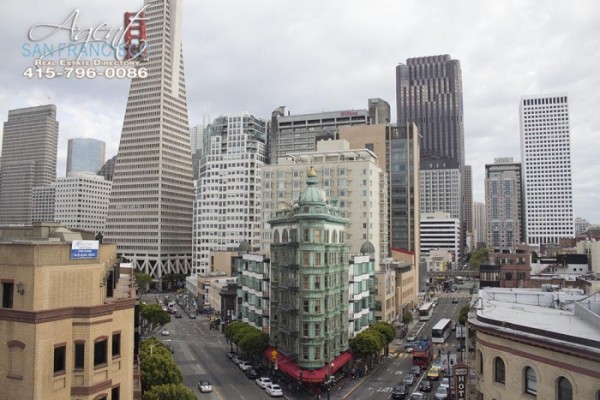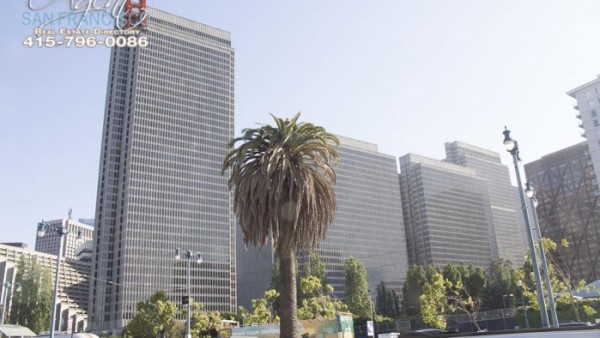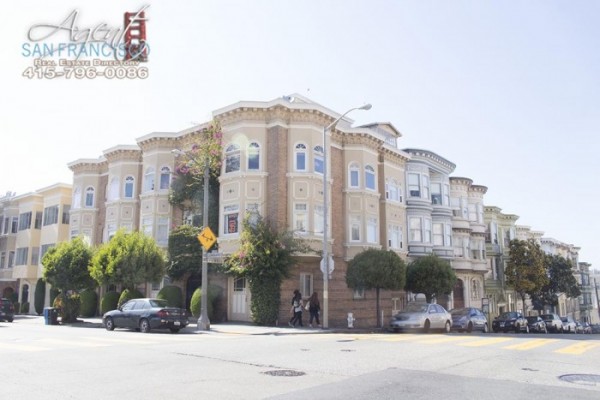May 7th 2015,

In November 2014 I took the liberty of creating info graphic videos of the San Francisco real estate economy for each of the 10 districts within the city boundaries. The statistical data was derived from local multiple listing service statistics and data from respected sources such as Zillow, Trulia and personal records. Basically the info graphic video sets for the San Francisco Districts represent graphical statistics representations of the List to sales ratio, Average days on market, Month to month listing and sales price comparisons and Year to year median sales prices of single family residences within the ten San Francisco district boundaries. In almost every district and on average, the listing and sales prices seemed to be increasing from 10-20% on any given graphic chart. The days properties were listed and sold on the market were decreasing, the selling prices were well above over listing prices and the markets indicated a short housing supply in the area of single family units and condominiums. Currently the San Francisco real estate market is experiencing an inflationary phenomena. In one case a property was listed for $500,000 and it sold within a thirty-day period for $800,000 in an all cash offer.
Click on the link to see a San Francisco real estate trend info graphic video
https://www.agentsanfrancisco.com/2014/11/12/outer-richmond-san-francisco-november-2014-real-estate-market-trends-sf/
Is this a market boom or another real estate housing bubble specifically in San Francisco?
There may be several reasons attributing to San Francisco’s real estate market boom or bubble. First and foremost, the San Francisco market is a short supply market. But what is causing this short supply of available housing?
Lets start with the national economy. Many economist and politicians, even the president want to rant that the American government is on its way to fixing its financial woes, but the reality is that the current national debt is 18 trillion and there is no signs of it getting smaller. When George Bush left office the national debt was about 10.6 trillion and under presidents Obama administration the government has taken on another 8 trillion more in debt totaling to 18.6 trillion in national debt. Is it a presidential function of taking on debt or is the Federal Reserve diluting the American dollar again by artificially fixing the Federal funds discount rate, which is at .75%? Its seems to be a balance of the two powers, but ultimately the Federal Reserve is in charge for regulating our economies health by assuring a balanced economy through the manipulations of the Federal Funds rate known as the Discount rate. The discount interest rate is simply and index rate at which lenders lend money to each other. Historically and empirically when the Federal Reserve lowers the discount rate it lends money at a lower interest rate to banks and lenders so there is more dollars circulating into the system as we have seen by the momentous growth of our current national debt balance. Traditionally when the Fed raises the discount rate there is less lending, as the interest rate is higher and dollars stop flowing into the money pool circulation. Its is obvious that our economy is still in its deepest woes because the Fed feels the need to stimulate the economy by keeping the rate low for the past four years and infusing more cash into the system. This is known as inflationary market. The dollar inflates because there is more money in circulation taking away value from the current value of the dollar within the system. In other words, it will take more dollars to buy goods and services because the value of the dollar is diluted with more dollars being added to the money pool.
Inflation means that prices do go up. The San Francisco real estate market is having its fair share of inflation. The prices are going up as supply dwindles. What’s the direct correlation? The low interest rates programs offered to buyers to buy homes via lenders lending money at lower rates.
Currently the 30 year fixed interest rate is at 3.63%. Why is this important? Simply because it is considered a historically low rate. It has been very few times in our economy that the interest rates have been this low. Despite the comparison to past rates, Americans are able to afford buying homes again because the low rates equate to relatively lower monthly mortgage payments. What does this mean? .
Well suppose a buyer is purchasing a listed property in San Francisco for $800,000 at 3.63% interest rate on 30-year term. Assuming a 20% down payment of $160,000 and adequate bank reserves for closing cost and interest, insurance and tax reserves the loan amount would be $640,000.00; The principle and interest payment would be $2,920.53 a month. Add another $12,000/12 =$1,000 for taxes monthly and another $125 for home insurance and the total bill is at $4,045.53 a month for an $800,000 home. By comparison the current rental rates for that same $800,000 homes is in the range of $3,500-$4,000 monthly. People would much rather own a home then rent one for the same price and take advantage of the tax, legal and emotional benefits of home ownership. For a working class family paying $4,045.53 a month for a very descent home in a quaint SF district is still relatively affordable within the San Francisco Bay Area and many people are taking advantage of this opportunity and buying up the supply in San Francisco, therefore driving the listing and sales prices and inflating the market or as a mere suggestion an over inflation and bubble.
So as we see, The current low rates offered by the Federal reserve trickle down to lower retail interest rates on loans to the public causing a short supply frenzy which is in turn causing inflated prices to the point where realtors and sellers are getting so many multiple offer scenarios that the sales prices are being blown out too fast to big indicative and heavily leaning toward a suggestive local San Francisco real estate bubble. At least for the benefit of the public, unlike the past market where the lenders were making weak investments on low qualifying lending criteria, the current loans being made are being made with tighter loan qualifying requirements therefore assuring better investment risk this time around. The risk and likely hood of default should is less likely. Even though loan defaults are lest likely, a bubble can still exist affecting equities.
What happens when the Fed elects to raise the rates again? This is where the bubble insinuation comes in. The “Bubble” question. Will we see a rapid decrease in equities if the Fed and lenders raise the rate lets say by one or two points? Of course because by comparison the monthly mortgage payment now rises to lets say a point higher to 4.63% using our given scenario above indicating a monthly PITI mortgage payment of $4,417 a month and increase of $372 more payment. What if the rate goes up by two points to 5.63%? The payment at 5.63% is at $4,811 a month and increase of $766 a month more in comparison to the original scenario listed above. Will the increasing in value cause a shift to the San Francisco local real estate economy as a whole? Historically yes the market will slow down. First, qualifying for a higher loan payment is highly dependent on debt income rations of borrowers. The more payment that a borrower has to qualify for the more income that a borrower must make therefore making it more restrictive of who can qualify for a loan and payment. The higher the payments the less number of people can qualify for a certain mortgage loan programs and payment amount and therefore causing more supply of homes on the market because less buyers to qualify for affordable home loans and since we have more supply of housing that means sales and listing prices tend to fall. So there will be people who can qualify for a loan an now more people that cannot qualify for a loan program. Already the increasing sales prices has drawn a divide between the haves and the have not’s. So, it is evident these days that not many people can qualify for loans easily as it was in the past not only because of tighter lending requirements, but because of limited income levels not keeping up with the inflationary market. Many people worry about this fact and many articles have been written regarding the 1% suggesting that people who have are part of the 1% group. So it is evident that in San Francisco only the cream of the crop will rise to the top of home ownership, as it seems, because they are the ones that will be able to qualify for loan programs.
The San Francisco real estate market has other components that make up the real estate financial market demand, supply and values other then just interest rates. So even though The Fed manipulating the rates effects the local San Francisco market there are other variables that affect the real estate market and values as well. What would those variables be? Foreign investors buying San Francisco real estate for cash and also San Francisco being a corner of the world where many people wish to live as it is a very esthetic place to live and finally its naturally limited size and high density as the city is only 7 x 7 miles in size. Discussion of the additional factors will be left for another article.
Hector Alana – Real Estate agent -1994-present
Mortgage broker since 1994-2010 funded over $100 million in loans.
Certified Appraiser from 1993-2010 with over .8,000 completed appraisals in the bay area
Agent San Francisco
https://www.agentsanfrancisco.com
San Francisco real estate – Anatomy of a housing bubble by Hector Omar Aldana
Agent San Francisco™ copyright All rights reserved.









